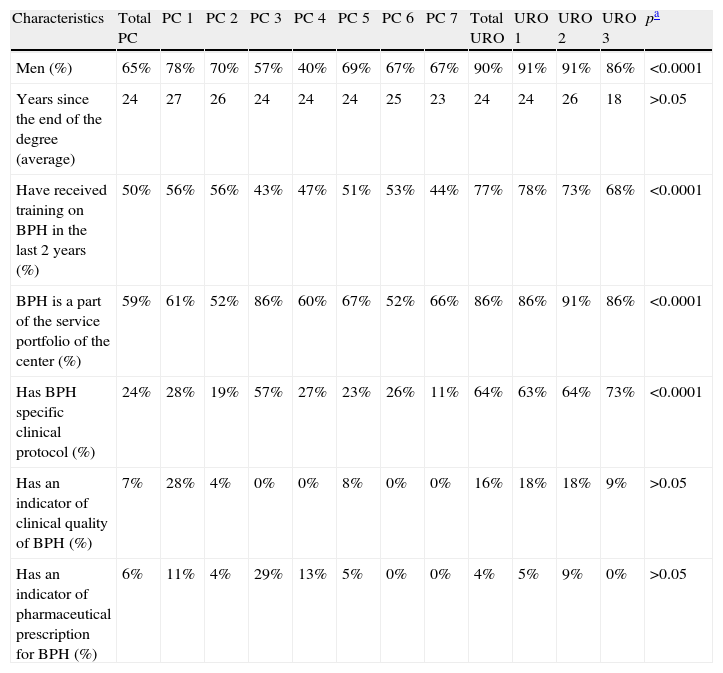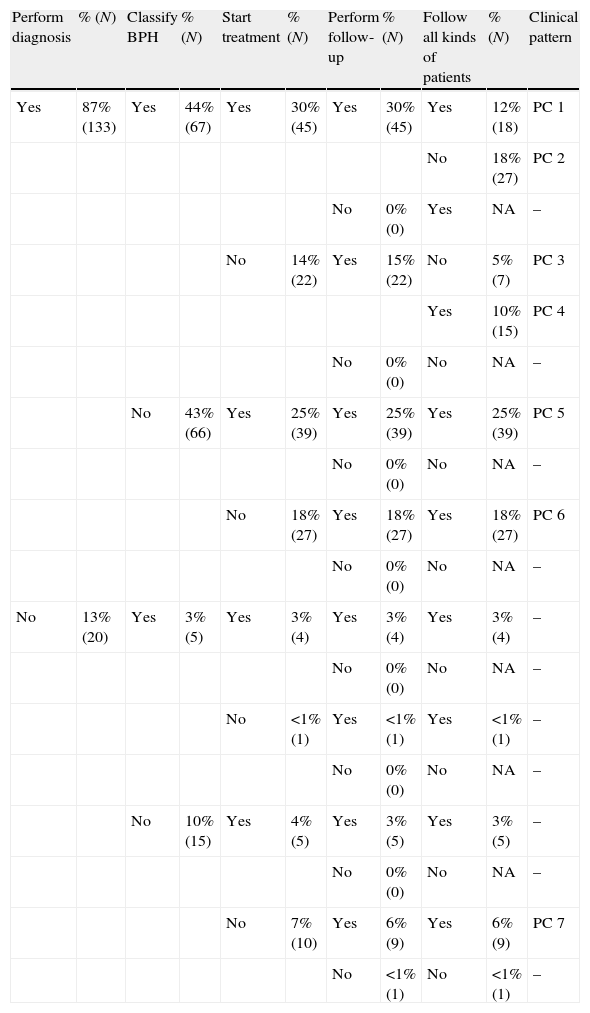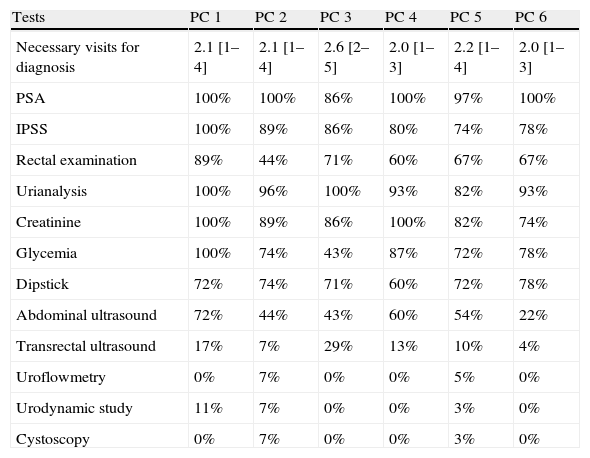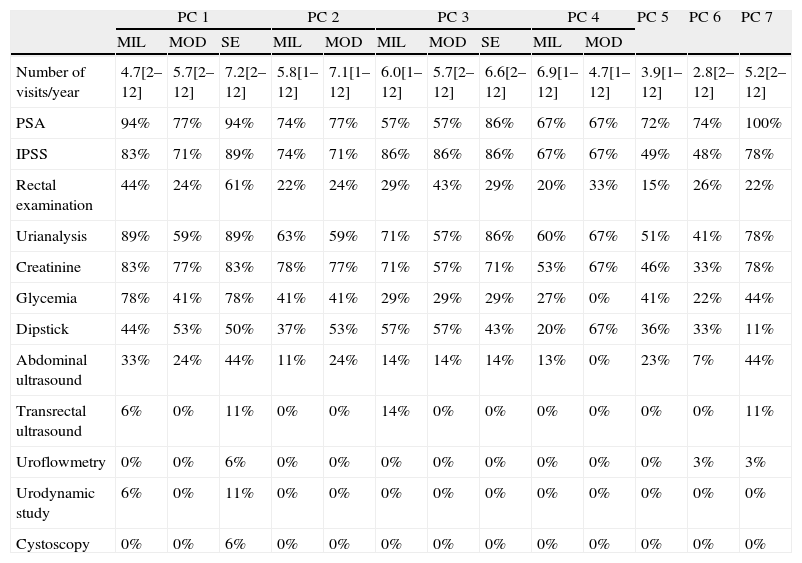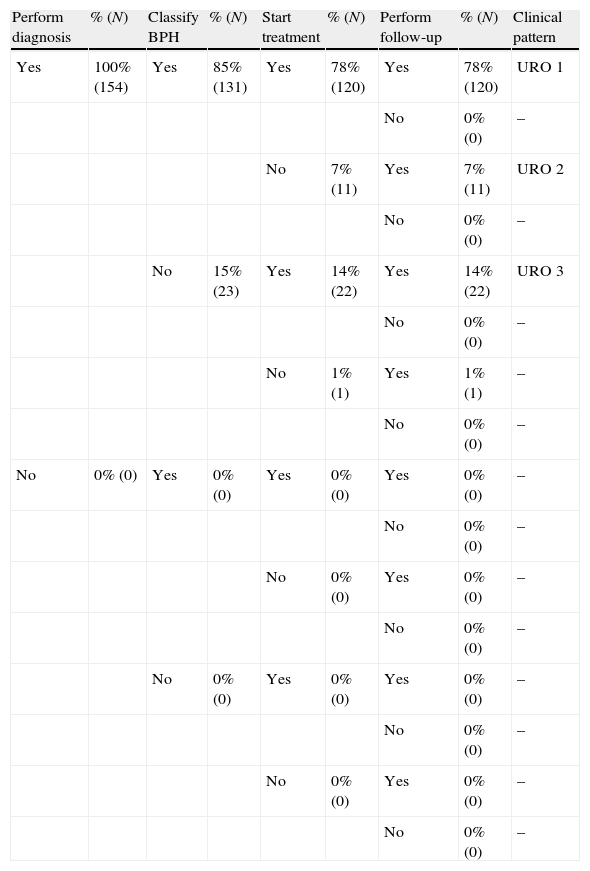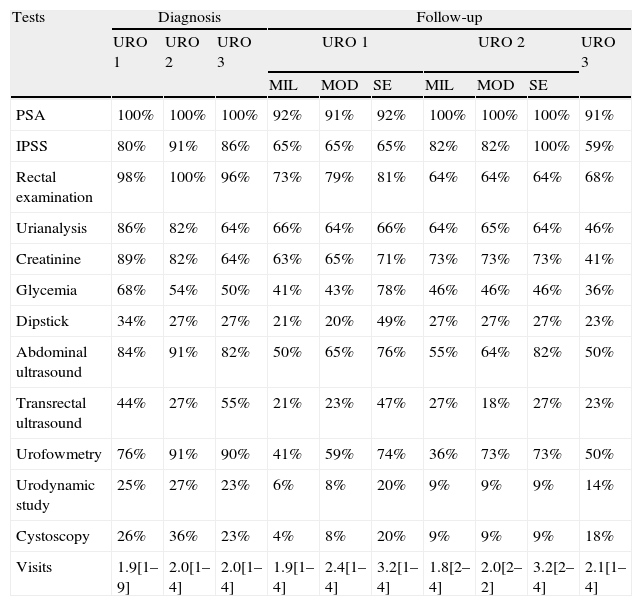To identify clinical management of benign prostatic hyperplasia (BPH) in Spain and its associated health care resources.
Material and methodsA qualitative cross-sectional study was conducted through telephone interviews with general practitioners (GPs) and urologists. Information about diagnosis, pharmacologic treatment and follow-up was collected. Results were clustered according to the key variables considered as drivers of clinical practice patterns: BPH diagnosis, severity classification, treatment initiation and follow-up of patients.
Results153 GP and 154 urologists participated in the study. 7 different clinical patterns were identified in primary care (PC). Resource use during diagnosis is relatively homogeneous, reporting a range of 2.0–2.6 visits employed and PSA and urine test being the most frequently performed. Follow-up is heterogeneous; frequency of follow-up visits oscillates from 3.2 to 7.0 visits/patient/year and type of tests performed is different among patterns and within the same pattern. In Urology, 3 clinical patterns were identified. Resource use is homogeneous in the diagnosis and in the follow-up; urologists employed 2 visits in diagnosis and a range of 2.1–3.2 visits/patient/year in the follow-up. The most frequent tests both in diagnosis and follow-up are PSA and digital test.
ConclusionsBPH management shows variability in PC, identifying 7 different clinical practice patterns with different resource use during the follow-up among patterns and within the same pattern. The implementation of clinical guidelines could be justified to reduce heterogeneity.
Conocer el manejo asistencial de la hiperplasia benigna de próstata (HBP) en España y el uso de recursos sanitarios asociado.
Material y métodosEstudio descriptivo transversal mediante entrevistas telefónicas a médicos de atención primaria (MAP) y urólogos. Se recogió información acerca del diagnóstico, tratamiento y seguimiento. Los resultados se agruparon por patrones asistenciales, definidos a partir de las variables: diagnóstico, clasificación según sintomatología, inicio de tratamiento farmacológico y seguimiento.
ResultadosParticiparon 153 MAP y 154 urólogos. Se identificaron 7 patrones asistenciales en atención primaria (AP). El uso de recursos sanitarios en el diagnóstico presenta cierta homogeneidad, empleando de 2,0 a 2,6 visitas, siendo las pruebas diagnósticas más habituales el análisis de PSA y de orina. En el seguimiento se observa heterogeneidad en el uso de recursos. Las visitas de seguimiento oscilan entre 3,2 y 7,0 visitas/paciente/año y el tipo de pruebas realizadas varía entre patrones y dentro del mismo patrón. En Urología se identificaron tres patrones asistenciales. Existe homogeneidad en el uso de recursos en el diagnóstico y en el seguimiento. La frecuencia de visitas es de 2 para el diagnóstico y entre 2,1 y 3,2 visitas/paciente/año en el seguimiento. Las pruebas más comúnmente realizadas en el diagnóstico y en el seguimiento son el análisis de PSA y el tacto rectal.
ConclusionesEn AP la asistencia prestada al paciente con HBP está sujeta a variabilidad, encontrándose 7 patrones asistenciales diferentes con un seguimiento heterogéneo entre patrones y dentro del mismo patrón. Esta situación podría justificar la necesidad de difusión e implantación de protocolos asistenciales.





